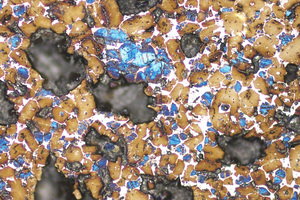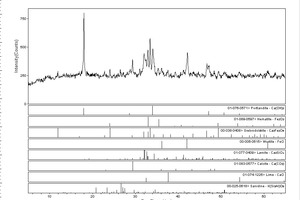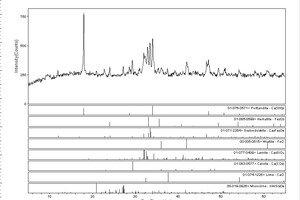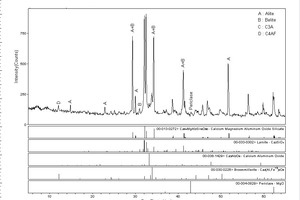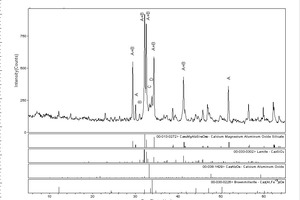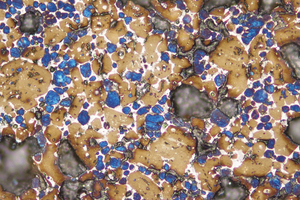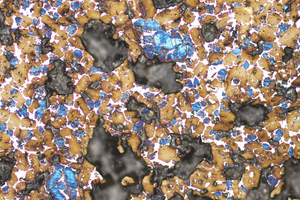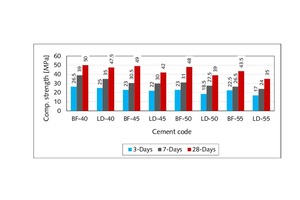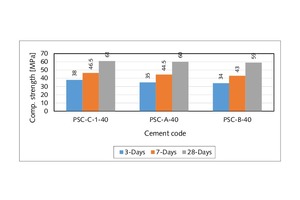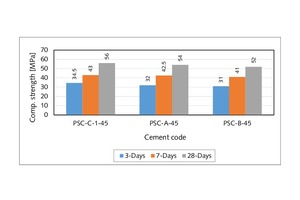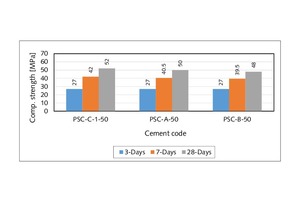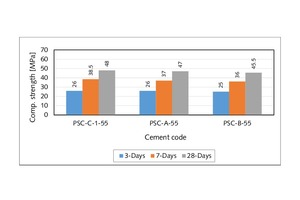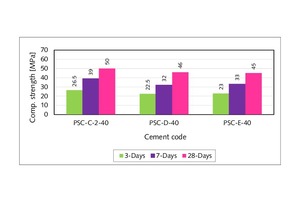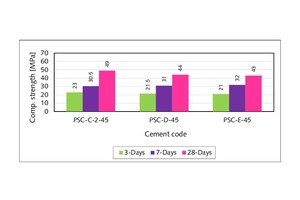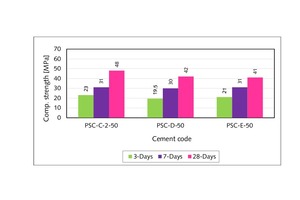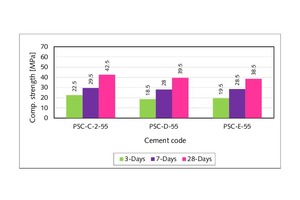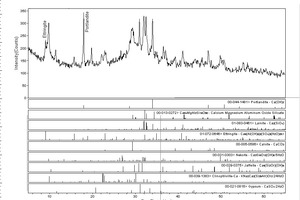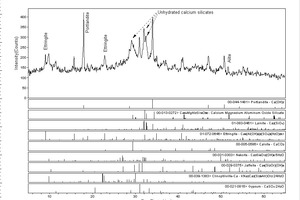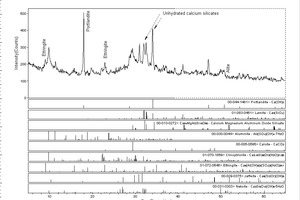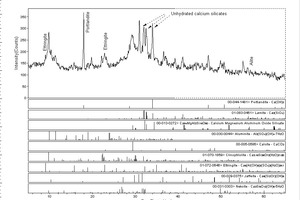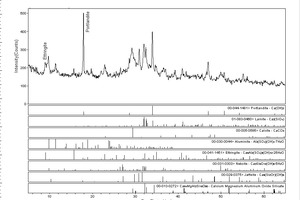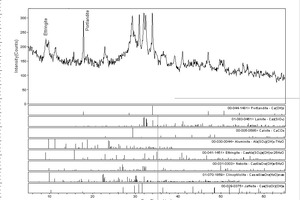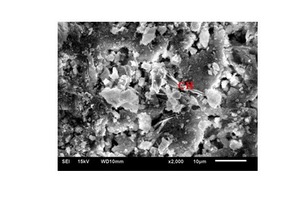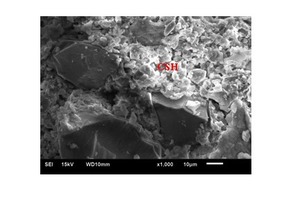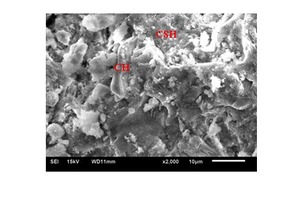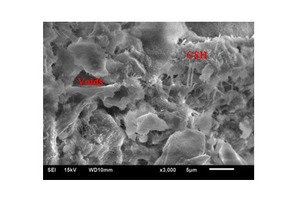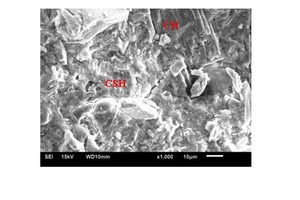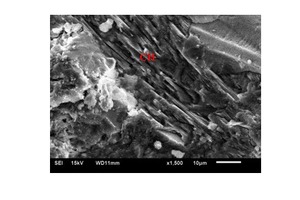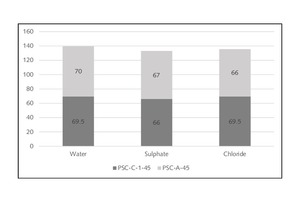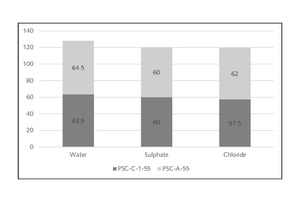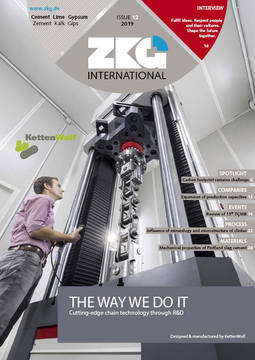REFERENCES
[1] Sahu, R.M.; Kuchya, M.; Sadangi, A.; Chowdhury, Subrato: (2015) Opportunities and challenges of combined recycling of alternate LD slag and petroleum cake in clinkerization. 14th NCB International Seminar on Cement and Building Materials, Technical Session-III, Theme: Alternate Fuels and Raw Materials-II, Proceedings: Special Lectures and Extended Abstracts, 01-04 December 2015, New Delhi/India, p. 93-95
[2] Tsakiridis, P.E.; Papadimitriou, G.D.; Tsivilis, S.; Koroneos, C.: (2008) Utilization of steel slag for Portland cement clinker production. Journal of Hazardous Materials, 152, p. 805-811
[3] Zihui Zhao; Dawang Zhang, Dongmin Wang, Hui Lin: (2015) Cementitious property of steel slag powder and impact on the mechanical property of cement. 14th International Congress on the Chemistry of Cement, Theme: Supplementary Cementitiuos Materials, Beijing/China, 13-16 October
[4] Xiaowei Sun, Wanyang Niu, Jinbo Zhao: (2015) Performance research on slag-steel slag based composite Portland cement. 14th International Congress on the Chemistry of Cement, Theme: Supplementary Cementitiuos Materials, Beijing/China, 13-16 October
[5] Shi, C. and Hu, S.: (2003) Cementitious properties of ladle slag fines under autoclave curing conditions. Cement and Concrete Research, 33 (11), p.1851-1856.
[6] Malhotra, V.M.: (1987) Properties of Fresh and Hardened Concrete Incorporating ground granulated blast furnace slag. In: V.M. Malhotra (Ed), Supplementary Cementitious Materials for Concrete, Ministry of Supply and Services, Canada, p. 291-336
[7] Xuequan Wu, Hong Zhu, Xinkai Hou, Husen Li: (1999) Study on steel slag and fly ash composite Portland cement. Cement and Concrete Research, 29, p.1103-1106
[8] Motz, H. and Geiseler, J.: (2001) Products of steel slags; an opportunity to save natural resources. Waste management, 21 (3), p. 285-293
[9] Pal, J.; Chaudhary, P.N.; Goswami, M.C.: (2003) Utilization of LD slag-An overview. Journal of Metallurgy and Material Science, 45 (2), p. 61-72
[10] Shiomi, S.; Sano, N.; Matsushita, Y.: (1977) Removal of phosphorous in BOF slag. Tetsu-to-Hagane, 63 (9), p.1520-1528
[11] Singh, Rajeev; Gorai, A.K.; Segaran, R.G.: (2013) Characterization of LD slag of Bokaro steel plant and its feasibility study of manufacturing commercial ‘fly ash-LD slag bricks. International Journal of Environmental Technology and Management, August’2013 (DOI:10.1504/IJETM.2013.050685)
[12] Wimmer, G.; Wulfert, H.; Ludwig, H.M.: (2015) A new process for production of cement clinker from steel making slags. 14th NCB International Seminar on Cement and Building Materials, Technical Session-II, Theme: Alternate Fuels and Raw Materials-I, Proceedings: Special Lectures and Extended Abstracts 01-04 December 2015, New Delhi/India, p. 81-83
[13] Monshi, A. and Asgarani, M.K.: (1999) Producing Portland cement from iron and steel slags and limestone. Cem.Concr. Res, 29 (9), p. 1373-1377
[14] Shi, C. and Day, R.L.: (1999) Early strength development and hydration of alkali activated blast furnace slag/fly ash blends. Advances in Cement Research, 11 (4), p. 189-196
[15] Umemura, Y. and Tsuyuki, N.: (2002) Utilization of converter slag as a concrete admixture. Sustainable Concrete Constructions, edited by Dhir, R.K.; Dyer, T.D.; Halliday, J.E.: Proceedings of the International Conference held at the University of Dundee, Scotland/UK, 9-11 September 2002
[16] Satou, M.; Tsuyuki, N.; Umemura, Y.; Harada, H.: (1999) Study on utilization of converter slag as concrete admixtures. Proceedings of JCI, 21(1), p. 163-168
[17] Yildirim, I.Z. and Prezzi, M.: (2011) Chemical, mineralogical and morphological properties of steel slag. Advances in Civil Engineering, Article ID: 463638, (DOI:10.1155/2011/ 463638)
[18] BIS (Bureau of Indian Standards) (2015), IS: 455, “Portland Slag Cement-Specification”, New Delhi/India
[19] Muhmood Luckman, Vitta Satish, Venkateswaran, D.: (2009) Cementitious and pozzolanic behavior of electric arc furnace steel slags. Cement and Concrete Research, 39, p. 102-109
[20] Kourounis, S.; Tsivilis, S.; Tsakiridis, P.E.; Papadimitriou, G.D.; Tsibouki, Z.: (2007) Properties and hydration of blended cements with steelmaking slag. Cement and Concrete Research, 37, p. 815-822
[21] Duda Antej: (1987) Aspects of the sulphate Resistance of Steelwork Slag Cements. Cement and Concrete Research, Vol. 17, No.3, p.373-384.
[22] Regourd, M.: (1986) Characteritiques et Activation des Produits D’addition. 8th International Congress on the Chemistry of Cement, Rio/Brazil, Vol. I, p. 199-232
[23] Uchikawa, H.: (1986) Effect of Blending Components on Hydration and Structure Formation. 8th International Congress on the Chemistry of Cement, Rio/Brazil, Vol. I, p. 233-248
[24] Dhir, R.K.; McCarthy, M.J. and Newlands, M.D.: (2002) Concrete for Extreme Conditions. Proceedings of the International Conference, University of Dundee, Scotland/UK, Thomas Teleford Publishing, London E14 4JD
[25] Maes, M.; Gruyaert, E. and Belie: (2012) Resistance of Concrete against Combined Attack of Chlorides and Sulphates. International Congress on Durability of Concrete
[26] Janković, K.; Miličić, L.; Stanković, S.J. and Šušić, N.: (2014) Investigations of the Mortar and Concrete Resistance in Aggressive Solutions. Technical Gazette 21, 1, p. 173-176
[27] Fiertak, M. and Stryszewska, T.: (2013) Resistance of Three-Component Cement Binders in Highly Chemically Corrosive Environment. Procedia Engineering, 57, p. 278-286

